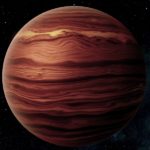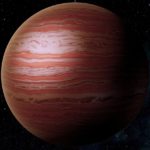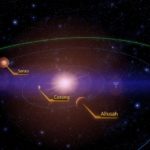System Specs:
- Stellar Mass: 0.35 Sol Masses
- Stellar Class: M
- Luminosity: N/A Sol
- Planets: 3
- Moons: >80
- Asteroid Belts: 0
- Asteroids: 0
- Objects: 0
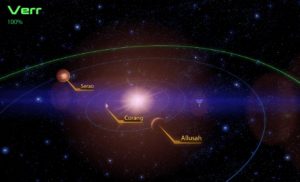
Verr’s economy hinges on mining operations at mineral-rich Corang and helium-3 refueling at Allusah. Serao has more abundant helium-3, but much more difficult to extract.
The system’s distance from the cluster’s mass relay hindered profitable exploitation of its resources until 2183.
–
Planets Directory:
- Corang
- Allusah
- Serao
–
Corang:

- Orbital Distance: 0.7 AU
- Orbital Period: 0.9 Earth-years
- Keplerian Ratio: 0.423
- Radius: 4,911 km
- Day Length: 53.2 Earth-hours
- Atmospheric Pressure: 0.73 atm
- Surface Temp: 58 °C
- Surface Gravity: N/A g
- Mass: N/A Earth-masses
- Satellites: 0
Initial surveys of Corang noted its high density and active plate tectonics, suggesting a high internal heat fueled by a greater than normal concentration of heavy elements and radioactives. Early test cores proved the mineral richness of the world, but distance from the mass relay in the Century system made it unprofitable to develop until late 2183.
The atmosphere is a smog of methane, ammonia, and water vapor, a so-called “primordial [sic] soup” similar to the conditions of early Earth. However, there is no evidence of life developing on Corang’s surface beyond the level of simple dextro-amino acids. The minimal energy input of the red dwarf Verr have created an energy-starved surface environment, though the planet’s volcanism does hold open some possibility for subterranean development.
–
Allusah:
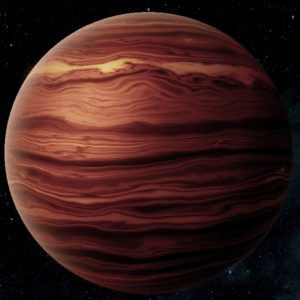
- Orbital Distance: 1.19 AU
- Orbital Period: 2.4 Earth-years
- Keplerian Ratio: 0.293
- Radius: 25,652 km
- Day Length: 18.1 Earth-hours
- Atmospheric Pressure: _ 0.44 atm
- Surface Temp: _ 1,157 °C
- Surface Gravity: _ 0.66 g
- Mass: _ 0.78 Earth-masses
Allusah is a small, dense “ice giant” with high concentrations of water, ammonia, and methane. A few automated helium-3 fuel stations have been established to refuel the ore freighters shuttling to and from Corang.
–
Serao:

- Orbital Distance: 2.14 AU
- Orbital Period: 5.7 Earth-years
- Keplerian Ratio: 0.302
- Radius: 70,881 km
- Day Length: 9.7 Earth-hours
- Atmospheric Pressure: N/A atm
- Surface Temp: N/A °C
- Surface Gravity: N/A g
- Mass: N/A Earth-masses
- Satellites: >80
Serao is a standard hydrogen-helium gas giant. Its more obvious features are a pair of gigantic storm cells; one in the northern hemisphere, and one in the south. While richer in helium-3 than Allusah, the difficulties of extraction from Serao’s gravity well and stormy atmosphere led to the other gas giant’s development.
Serao has over 80 moons, ranging from a radius of 50 to 2,000 kilometers. The asari Tersicor Council has established an observation post on one of the larger moons to study the planet’s twin storm systems.
–
–
video


